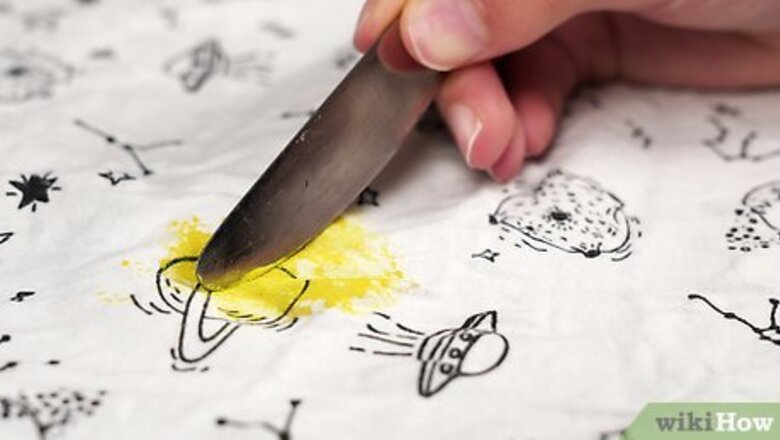
views
- Scoop or scrape off as much paint as possible with a spoon or dull knife. Flush the back of the stain with cold water to remove paint from between the fibers.
- Work liquid dish soap into the stain using a sponge or soft cloth with gentle circular motions. Rinse the soap off with cold or lukewarm water to wash out the stain.
- Toss your clothes into the washer with laundry detergent, and run a cold or lukewarm cycle. Dry your clothes if the stain is gone, or repeat the steps if the stain persists.
Removing Wet or Dried Water-Based Paint
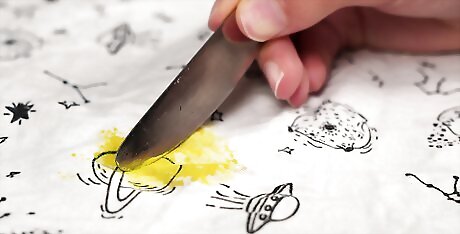
Scrape off excess paint with a spoon or knife. As soon as you notice the water-based paint stain on your clothes, act quickly to prevent it from setting. If the paint is still wet, carefully scoop it off of the fabric without pushing it in deeper. If you’re removing dried paint, then gently scrape the hardened paint with the edge of your spoon or knife to lift it up before getting the garment wet. It’s okay if there’s still a little paint left on the surface of your clothes. Removing the excess just gives you less to clean so the stain is easier to remove. This method works for removing acrylic paint and cleaning latex paint from your garments.
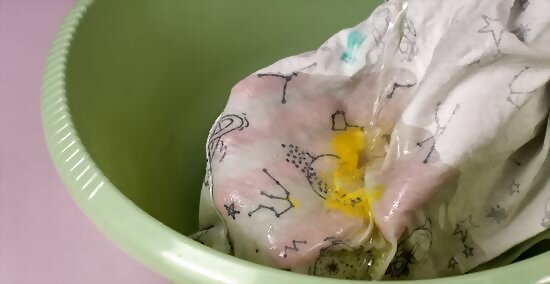
Flush the stain with cold water. Turn the garment inside-out so you’re working from the back of the stain. Hold the stain under cold running water from your faucet to flush the area and help lighten the paint. Keep flushing the stain until you can’t rinse out any more of the stain.. Flushing the garment gets rid of loose paint still stuck between the fabric fibers so it doesn’t get trapped or make the paint stain worse. Alternatively, soak your clothes in a bowl with clean, cold water. Agitate the water every few minutes to help work the paint out from the garment. While warm or hot water may help “push out” a stain from the fabric fibers, it could potentially make the stain set so it’s more difficult to remove. Stick with cold water to get the water-based paint out most effectively.
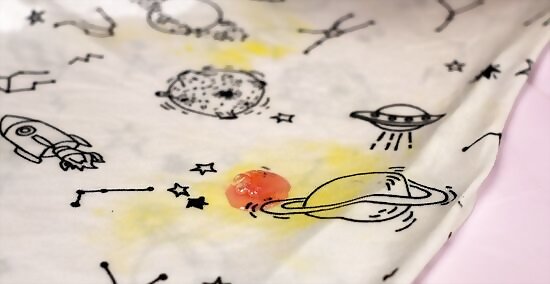
Scrub liquid dish soap onto the stain with a sponge or cloth. Put a few drops of liquid dish soap directly onto the stain to coat it. Wet the corner of a sponge or clean white cloth, and work the soap into a lather over the stain to break it apart. Blot the soapy water off of the stain to check your progress, and continue gently scrubbing in a circular motion until you remove as much of the stain as possible. If possible, try to use dish soap without any added perfumes or color to prevent further staining on your clothes. Alternatively, you may use liquid laundry detergent instead of dish soap if your garment isn’t color-safe.
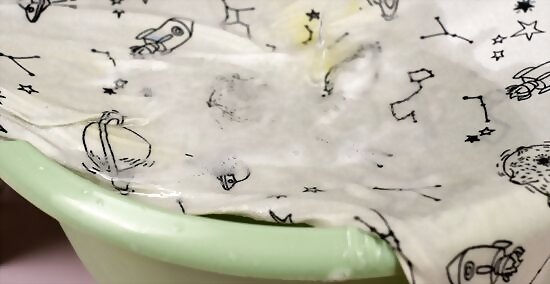
Rinse the garment with cold water and check your progress. Rinse the sponge and the garment under cold water, making sure to get rid of all the detergent and excess paint from your clothes. Then, check the paint stain to see if it’s completely faded or still present. If you still notice the paint stain on your clothes, apply a few more drops of detergent to the sponge and gently work it onto the stain. Otherwise, you’re ready to move on. It may take 3-4 cleanings until you remove all the paint. If you still notice the paint stain after scrubbing it multiple times, you may need to use a different solution to clean it.

Wash your clothes in your machine on a standard cycle. Check the care tag on your clothes to find the best cycle and temperature to wash your clothes. Add detergent to your washing machine and toss in the paint-stained clothes. Run the cycle like normal to flush out the remaining marks on your fabric. If you still notice the stain after washing it in your machine, try scrubbing it with dish detergent and a sponge again. Avoid placing your clothes in the dryer if you still notice the stain. Drying your clothes could cause the stain to set and make it really difficult to remove.
Cleaning Stubborn Stains

Try using rubbing alcohol for dried paint you can’t lift with soap. Rubbing alcohol, or isopropyl alcohol, may be able to lift up paint from clothing fibers even after the paint has dried. Pour a small amount of alcohol onto the stained area and gently scrub the area with a toothbrush. Continue doing this until you remove the stain as much as possible. Then flush the garment under clean water and wash it in your machine like normal. Alternatively, soak a paper towel in the rubbing alcohol. After you flush the stain, place the soaked paper towel on top of the stain and let it sit. Keep the towel moist until the stain breaks apart. Test the rubbing alcohol in an inconspicuous spot on your garment, like along an inseam, to make sure it doesn’t cause any discoloration. If it does leave a mark, avoid applying it to the stain. In a pinch, a non-acetone nail polish remover may also work to lift up a stubborn stain.
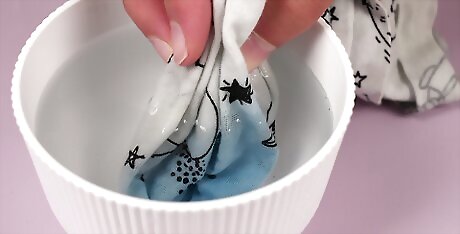
Soak the stain with stain pretreatment or oxygen bleach for 1 minute before washing. Wet the area around the paint stain with your pretreatment remover and let it sit for about 1 minute to penetrate the stain. Then, wash your clothes as normal in your washer. Oxygen bleaches are gentler and are color-safe, so just add the recommended amount on the package to your washing machine along with your stained clothes, and run a warm water cycle to eliminate the stain. If you’re cleaning paint off of a white garment, then it’s safe to use chlorine bleach. Just avoid it if you’re treating colored clothes because the bleach could remove the pigment.

Toss a paint-covered garment directly in your washing machine. If you have a big spill and your garment is covered in paint that’s too hard to wash by hand, put it by itself into your washing machine. Run the garment through the warmest cycle that’s recommended on its care label using the standard amount of detergent. When the cycle finishes, check your garment for any residual stains. If there are still stains, try washing it again with oxygen bleach or stain remover. Avoid drying your garment after washing it because it could cause the stain to set and become permanent. Because the paint is water-soluble, it will dissolve and rinse out of your washing machine at the end of the cycle. If you still notice paint inside, just run an empty cycle without clothes to rinse out the residual mess.

Use a professional dry cleaning service if it’s a delicate garment. If your paint-covered garment is made from delicate or expensive fibers, like silk or leather, or if the tag reads “Dry Clean Only,” let a professional remove the stain for you. Look online for dry cleaners near you and call them to ask if they can remove the paint from your specific garment. They’ll be able to use special chemicals that aren’t available to the public that will flush out the stain without harming your garment. Even dry cleaners may have a tough time removing set paint stains that have dried on the fabric, but a cleaner may be able to lighten them so they’re less noticeable.
Keeping Your Clothes Safe
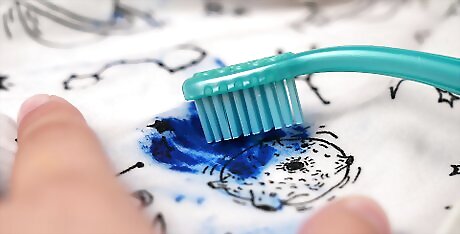
Clean the stain as quickly as possible. As soon as you spill paint or notice it on your clothing, start cleaning it right away so it doesn’t have time to dry. Tackling a water-based paint stain while it’s still fresh makes it easier to lift the mark out of the fabric and prevents it from becoming permanent. If your clothes go through the wash and the stain dries on the fabric, it may become difficult or impossible to remove completely.

Test all cleaning solutions on a small area of the garment first. Before you pour any cleaning solutions onto the stain, dab it onto an inconspicuous spot to test it on the entire garment. Let the cleaning solution dry for 5-10 minutes to make sure that it won’t affect the color of your clothes. If the solution causes your clothing’s color to bleed or fade, stop using the solution and try another method instead. Otherwise, the cleaner is safe to use.
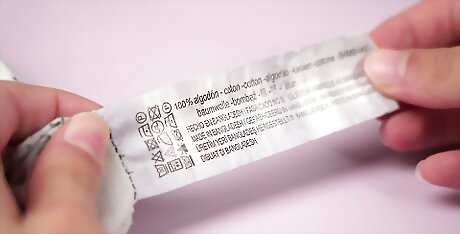
Check the care labels on your clothing for specific laundering instructions. Some clothing will have specific cleaning instructions or restrictions on the label, so be sure to thoroughly read them before you start removing the stain. Follow all of the instructions on the label so you don’t end up damaging the garment permanently. For example, a water bucket icon with an “X” through it means that you shouldn’t clean the clothes in a washing machine, and a hand over a water bucket icon signals that it’s best to hand-wash the garment.
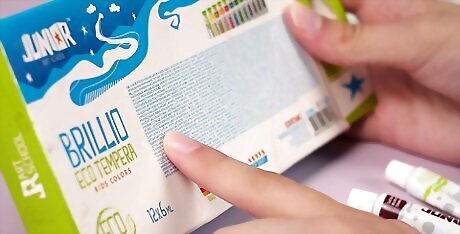
Refer to the paint can’s label for specific cleaning instructions. Some water-based paint will come with directions on the best way to remove it from clothing. Check all the labels and warnings on the paint you’re using, and follow any of the special instructions they list for the most effective clean. Some paint will also provide a list of chemicals you should avoid using when trying to remove the paint.



















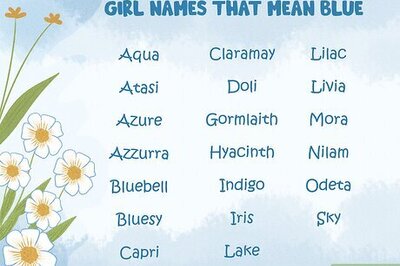
Comments
0 comment